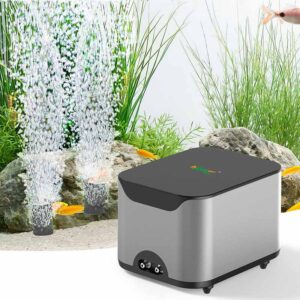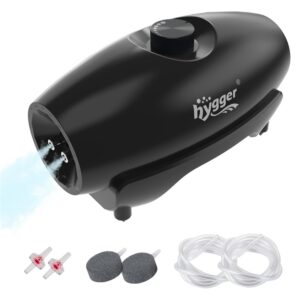Koi fish are one of the most beautiful fish species. They show vibrant coloration, smooth swimming patterns, etc. However, there are several koi fish diseases. Some common diseases of koi fish are the following, along with their treatment. You will also find some precautions to keep your koi fish healthy.
Content Table

common diseases of koi fish
Structural and Growth of Koi Fish
Koi fish are one of the most common choices. They exhibit unique features, i.e., coloration, movement, lifespan, etc. Here are their structural and growth features.
Body Structure
They have torpedo-like elongated bodies. This body structure allows them for smooth and efficient movement in the water. Usually, they have large and overlapping scales. However, we can’t generalize it because some species, e.g., Doitsu koi, have low or no scales.
They have 4 types of fins, i.e., dorsal, caudal, pectoral and pelvic, and anal fins. Each fin has its specific function. The dorsal fin and anal fins help them in stability, and the caudal fin or tail fin helps them in propulsion. Pectoral and pelvic fins allow them to steer and balance.
They have a downward mouth with two pairs of barbels. These barbels help them in food search. Downward mouth helps them in feeding as they are bottom feeders. Their gills are on the sides of their head, helps them to intake oxygen from the water.
Growth Features
| Feature | Value | |
| Growth Rate | Koi fish show rapid growth in the initial years. Under ideal conditions, they grow 12-15 cm in the first year. | |
| Size | 24 to 36 inches. It depends on genetics, food, environment, etc. | |
| Lifespan | Average 20 to 30 years. However, they can reach up to 50 years. | |
| Color development | They develop color over time. | |
| 0 -3 months | Pale and translucent | |
| 3–12 months | Colors and patterns emerge | |
| 1–3 Years | Colors deepen
Red intensifies |
|
| 3–7 Years | Optimal coloration | |
| 7+ years | Red faints
White or yellow begins to pop |
|
| Factors affecting growth | Pond/aquarium size
Water temperature Nutrition Water quality |
|
What Diseases Will Koi Fish Get?
Here are some common diseases koi fish can get in your aquarium or pond.
| Disease | Cause |
| Anchor Worm | The parasitic crustacean (Lernaea cyprinacea) attaches to the skin. |
| White Spot Disease (Ich) | Ichthyophthirius multifiliis parasite |
| Poor water quality. | |
| Fin Rot | Bacterial infection |
| Often from poor water conditions | |
| Mouth Rot | Bacterial infection in the mouth and gills |
| Ich | Parasite affecting the skin and gills |
| Dropsy | Bacterial infection |
| Parasites causing fluid retention | |
| Aeromonas | Bacterial infection |
| Ulcers | Bacteria or parasites entering through open wounds |
| Columnaris | Flavobacterium columnare bacteria |
| Poor water quality | |
| Flukes | Flatworm parasites feeding on gill tissue |
| Fish Lice | Parasitic lice feeding on fish blood |
| Carp Pox | Viral infection causing white Wart-like growths |
| Costia | Protozoan parasite affecting skin and gills |
| Chilodonella | The protozoan parasite causes gill inflammation |
| Trichodina | The protozoan parasite causes skin irritation |
| Pinecone Disease | Mycobacterium bacteria, leading to raised skin bumps. |
| Swim Bladder Disease | Bacterial infections |
| Parasites | |
| Physical injuries |
Koi Fish Diseases Listing
These diseases have a specific effect on koi fish life. Here are diseases and their effects.
| Disease | Effect |
| Anchor Worm | Visible worms on the skin |
| Irritation | |
| Discomfort | |
| White Spot Disease (Ich) | White spots on the body |
| Scratching against surfaces | |
| Labored breathing | |
| Fin Rot | Frayed |
| Discolored fins | |
| Potential fin loss | |
| Mouth Rot | Redness |
| Swelling | |
| Excessive mucus | |
| Bleeding around the mouth | |
| Ich | White spots on the body and gills |
| Lethargy | |
| Rapid breathing | |
| Dropsy | Swollen abdomen |
| Protruding scales | |
| Lethargy | |
| Aeromonas | Reddened fins |
| Ulcers | |
| Skin discoloration | |
| Ulcers | Open wounds |
| Red streaks | |
| Loss of appetite | |
| Lethargy | |
| Columnaris | Grayish patches on the skin |
| Frayed fins | |
| Open sores | |
| Flukes | Difficulty breathing |
| Scratching against objects | |
| Fish Lice | Intense itching |
| Rubbing against objects | |
| Damaged fins | |
| Carp Pox | White wart-like growths on the skin |
| Costia | White spots
Rapid breathing Lethargy |
| Chilodonella | Gray patches on the body |
| Clamped fins | |
| Gasping for air | |
| Trichodina | Scratching |
| Rapid breathing | |
| White patches on the skin | |
| Pinecone Disease | Raised skin bumps |
| Loss of scales | |
| Lethargy | |
| Swim Bladder Disease | Abnormal floating or sinking |
| Loss of balance |
What Can I Do About Koi Fish Diseases?
Here are some effective koi fish disease treatments that are constantly improved by aquarium enthusiasts.
| Diseases | Treatment |
| Anchor Worm | Dip a cotton swab into rubbing alcohol and gently dab the affected area to remove worms |
| White Spot Disease (Ich) | Use anti-parasite medication, i.e., Formalin or Methylene Blue. |
| Improve water quality | |
| Fin Rot | Use antibiotic according to vet’s instructions |
| Improve water quality | |
| Mouth Rot | Treat with antibiotics |
| Improve water conditions | |
| Ich | Use antiparasitic medication, e.g., Kusuri Fluke, Evolution Aqua Formaldehyde, etc. |
| Improve water quality | |
| Dropsy | Proper medication |
| Water quality improvements at early stages | |
| Aeromonas | Treat with antibiotics, e.g., Baytril, ciprofloxacin, etc., promptly to prevent it from becoming deadly |
| Ulcers | Treatment varies depending on the severity, it may require antibiotics or parasite control |
| Columnaris | Treat with antibiotics or other medications to boost immunity and reduce inflammation. |
| Flukes | Use special medications that kill both adult worms and eggs before they hatch. |
| Fish Lice | Use special medications, i.e., Dimilin. It kills adult lice and prevents eggs from hatching again |
| Costia | Treat with antiparasitic medication |
| Maintain 0.9% salt for a week and remove it gradually | |
| Improve water quality | |
| Chilodonella | Treat with antiparasitic medication |
| Trichodina | Use Potassium Permanganate for disinfection |
| Treat with antiparasitic medication | |
| Pinecone Disease | Isolate the affected fish |
| Improve water quality | |
| Salt water bath | |
| Swim Bladder Disease | Improve water quality |
| Balanced diet | |
| Epsom salt bath |

Koi fish diseases
Prevent Disease in Koi Fish
Prevention is the best way to avoid diseases in fish. Here are some precautions to enjoy a happy koi fish tank/pond.
Improve Water Quality
| Parameter | Value |
| pH | 7.0–8.5 |
| Weekly water change | 10-20% |
| Temperature | 65 – 75°F |
| Ammonia and Nitrite | 0 |
| Nitrate | Below 60 ppm |
| DO | 8 gram/liter |
| Alkalinity | 100–250 mg/L |
Quarantine New Fish
2 to 4 weeks quarantine for a new fish and observe its movements.
Maintain Population Density
Maintain 1-inch koi fish for a 10-gallon tank volume. Usually, 4 to 5 koi fish are suitable for a 1000-gallon tank.
Balanced Feeding
Avoid overfeeding, as it can damage water quality and cause obesity in koi fish. Feed them a balanced diet rich in proteins, vitamins, and minerals.
Monitoring
Keep an eye on your koi. Lethargy, erratic swimming, or loss of appetite are the signs of the disease. Address them early to avoid any massive disruption.
Pond cleaning
Keep the tank clean of dead leaves, algae, and leftover food. Regularly clean the filters and aerators. It will help in continuous filtration and water circulation in the tank.

koi fish diseases treatment
Closing Remarks
Koi fish are beautiful, large-sized, and long-lived fish species. They are hardy but could be hit with various diseases. Each disease has a specific cause, effect, and cure. However, prevention, i.e., maintaining water quality, proper feeding, and cleanliness, is the best disease treatment. Always carefully watch your fish’s behavior and treat them at the earlier stages to avoid major discomfort.


Leave a comment